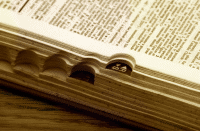 Travis Hardin Home
: Essays :
Linguistics
Travis Hardin Home
: Essays :
Linguistics
 Travis Hardin Home
: Essays :
Linguistics
Travis Hardin Home
: Essays :
Linguistics
| Inconsistences in the Pure Vowel
Travis Hardin In "The Story of English," authors McCrum, Cran, and MacNeil report on the Australian habit of using oi for I, and ahee for ay (in "may" or "say"), and say that even Australians themselves viewed these examples as sub-standard pronunciation. Then there is the famous Liza Doolittle of "My Fair Lady" fame who was commanded to make her a's pure: The rain in Spain falls mainly on the plain. Not rah-ain and Spa-ain. And now, in the spirit of generalization for which I'm famous, whether I know the subject or not--it seems to me that pure vowels are and should continue to be regarded as standard, while pronuncing them as diphthongs is sub-standard. If there were such a consistency in vowel pronunciation, why isn't the Southern U.S. flat "I" preferred? I mean the pronunciation eye and opposed to the diphthong i-ee. For that matter, I think "I" escapes the rule wherever English is spoken: Drastically in Australia, with their io, nearly as drastically in America with their i-ee, and even in England, though their I is flatter–and purer. I have been called on my I pronunciation by a friend in Maryland every time it got too flat. I dislike inconsistencies, and that is why the matter bothers me. If this piece means nothing, I"ve still learned something. While writing, I have learned that all the vowels can be pronounced by moving the vocal chords alone, with the lips and tongue held perfectly still. 25 June 2000 |
Last updated |